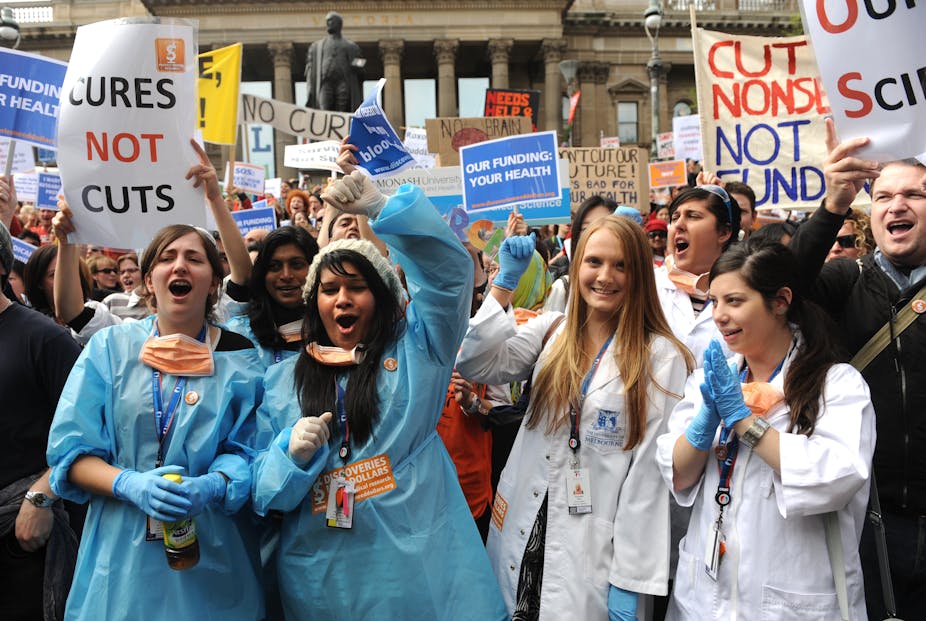One day in April, Walter and Eliza Hall Institute of Medical Research director Douglas Hilton called his communications manager, Penny Fannin, into his office.
“He said he’d heard significant cuts were coming to the medical research budget and he felt that the usual response like letters to the government weren’t going to cut it this time,” Fannin told The Conversation.
“He said could I please start a grassroots campaign to raise the issue about what cuts to medical research funding could mean.”
So began the enormously successful Discoveries Need Dollars campaign, which helped stop $400 million being sliced from the National Health and Medical Research Council, the agency that funds organisations like the Walter and Eliza Hall Institute of Medical Research.
After hearing confirmation from a member of cabinet that the $400 million cuts were being discussed as a real possibility, the campaign team swung into action.
Fannin, a former science writer for the Age who studied genetics and zoology, helped craft a clever campaign using Facebook, Twitter, LinkedIn and a smart dedicated website, that called on people to consider what Australian medical research had achieved so far and how cuts would affect them.
“We thought it important for people to appreciate what are the major discoveries in Australia that have benefited them, like the humidicrib and that sleeping babies on their backs can reduce the risk of SIDS,” said Fannin. “The really basic message was that a cut to medical research would mean that research that’s underway could be discontinued.”
The campaign began slowly, with most of the ‘likes’ they were getting on Facebook attributed to the 700-odd staff at the Walter and Eliza Hall Institute of Medical Research worried about their jobs.
“When our number of ‘likes’ on Facebook reached 1000, we thought ‘Wow, it’s not just our staff saying, 'yay us’. It has moved into the broader community’,” she said.
The campaign team asked people to pen letters to the government and send a copy to the Discoveries Need Dollars activists for inclusion on their ‘honour roll’. Hundreds and hundreds flowed in.
“There were upsetting stories from people with children who had died of brain tumours who really wanted the government to understand that cutting medical research was taking hope away,” said Fannin.
Thousands more sent in postcards expressing condemnation of the cuts and well-attended street rallies took place in major capital cities, drawing a lot of positive media coverage.
“The campaign took on a life of its own. On Twitter, we had a small number of dedicated people who were tweeting to every politician imaginable and asking them their position on medical research funding. We knew it was working when we started to get politicians engaging with us on Twitter,” she said. “That’s when I saw the power social media had in influencing people.”
By Easter, the team had an inkling that the government would back down but the success of the campaign was proven when the budget was delivered on Tuesday night. Medical research funding was safe.
“Broadly speaking, it was a success story. I think it was due to the force of the public response,” said Fannin.

